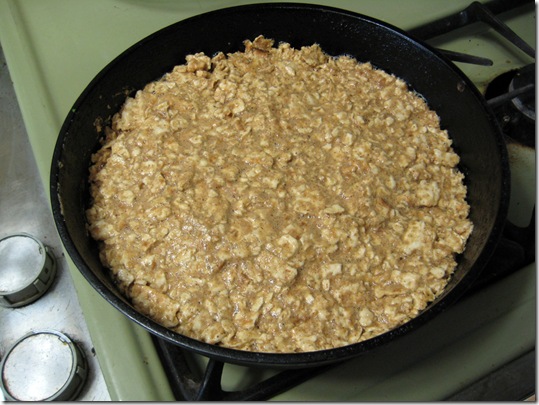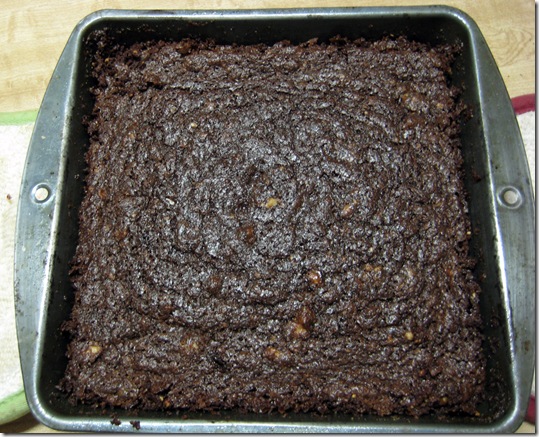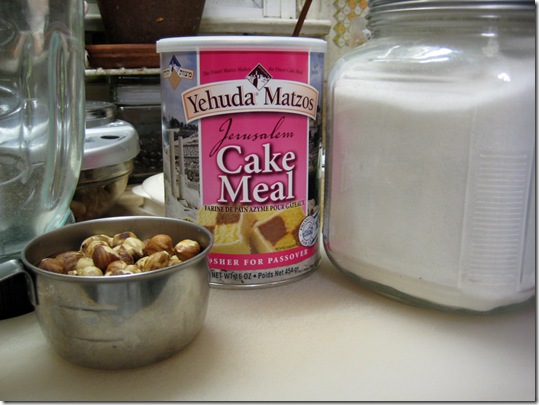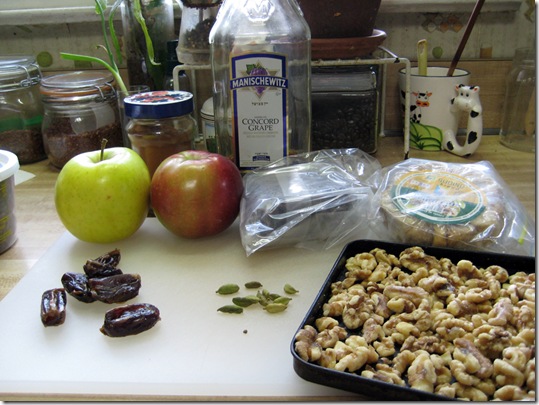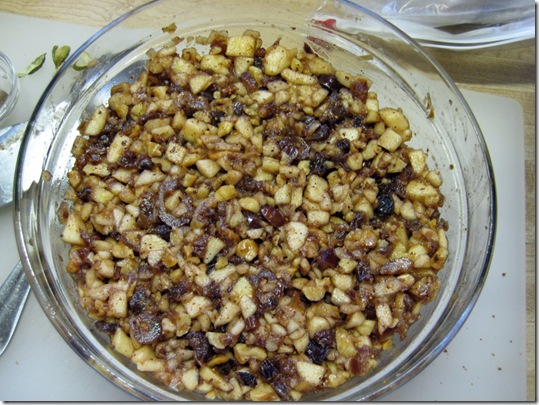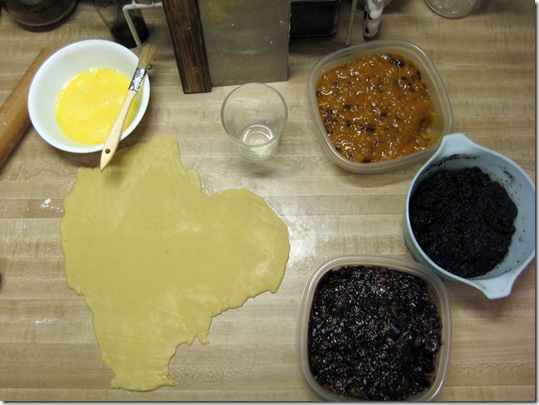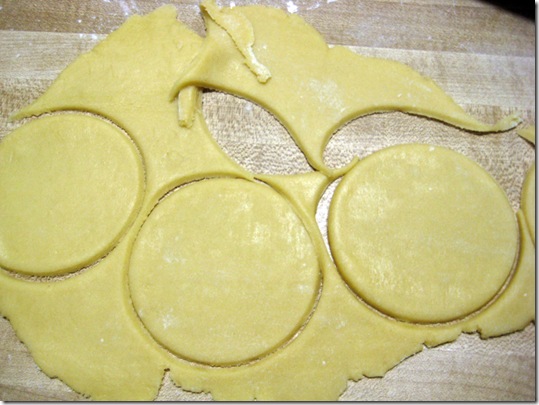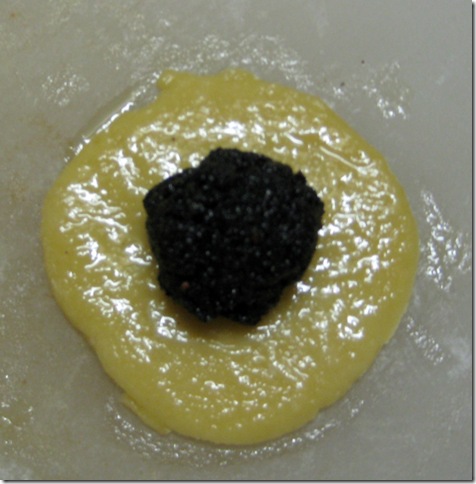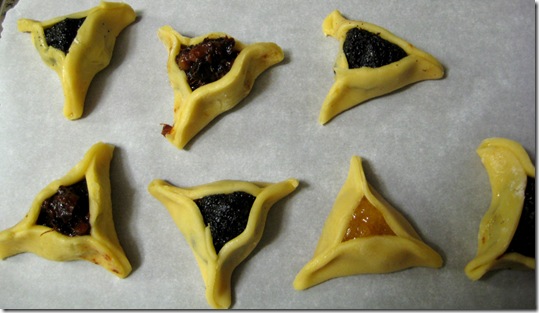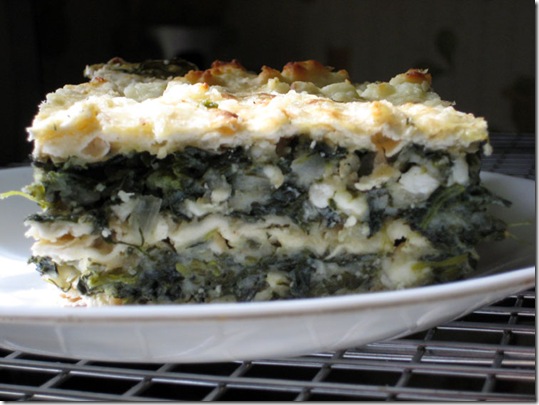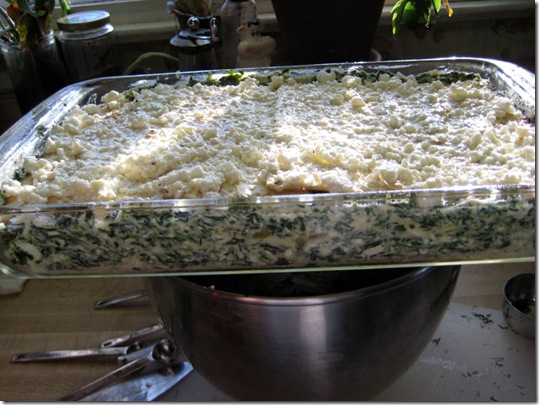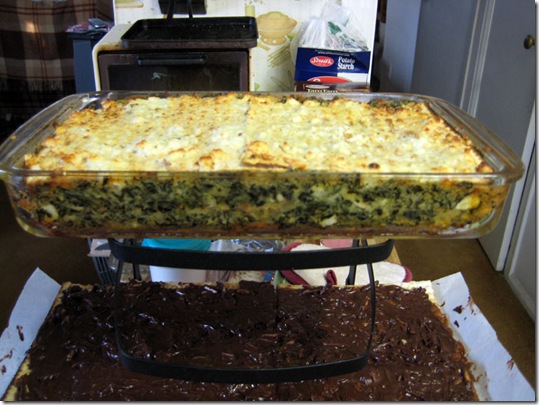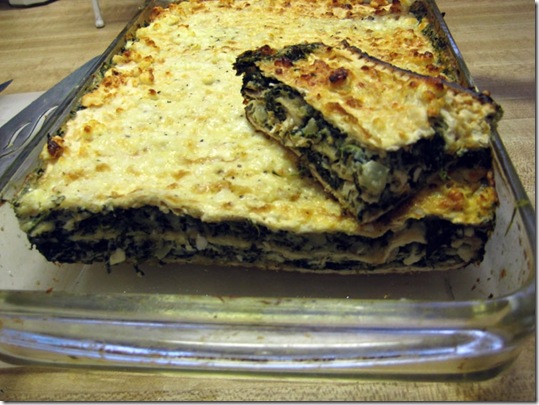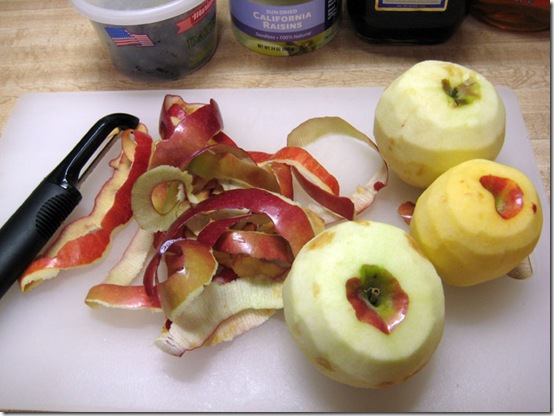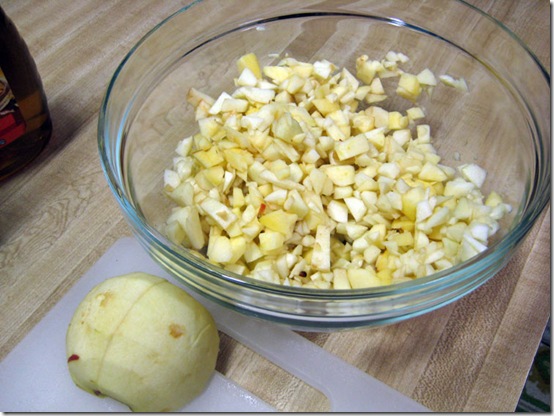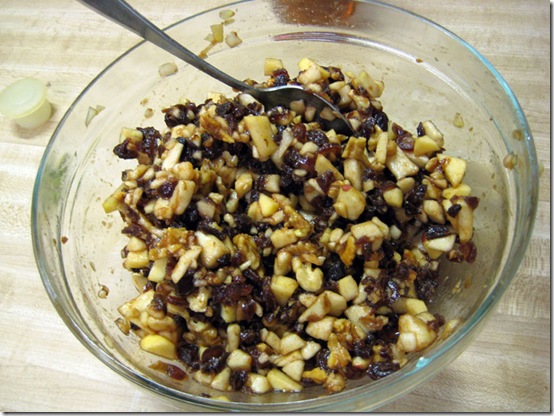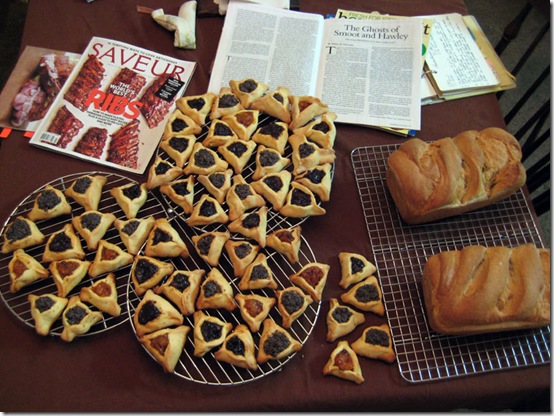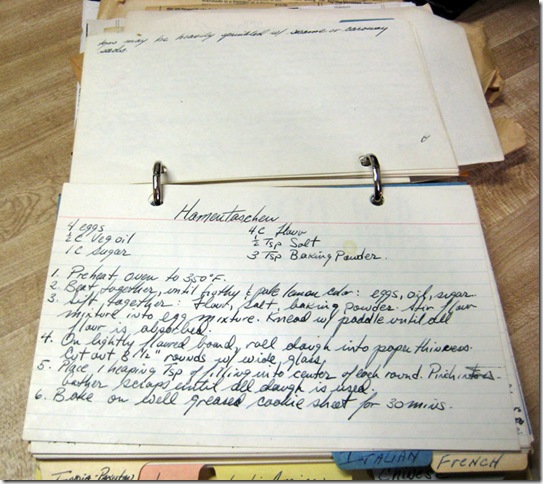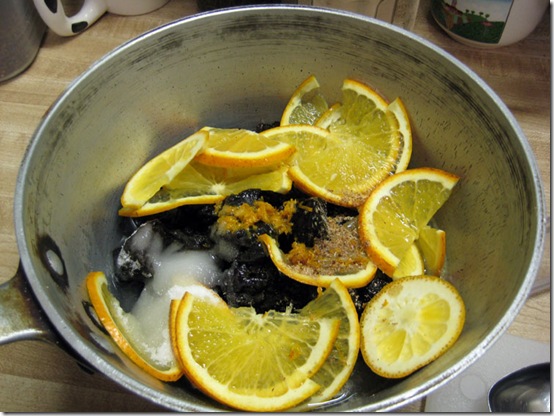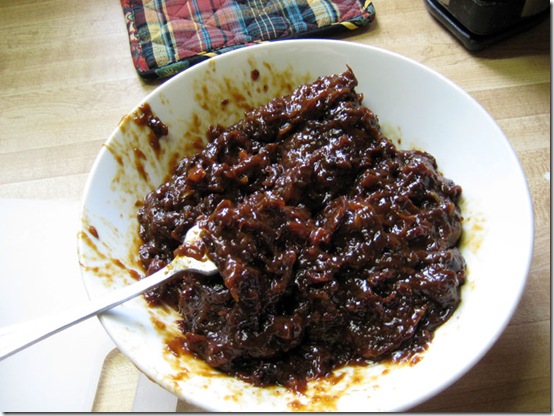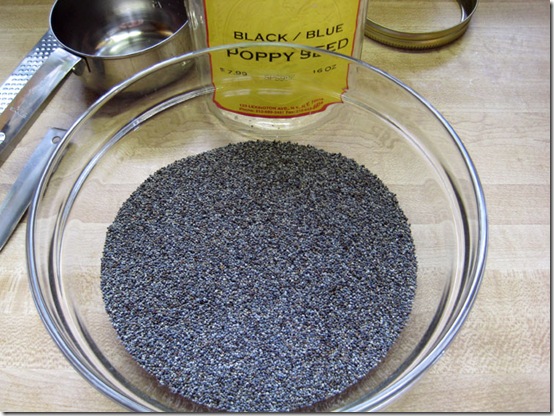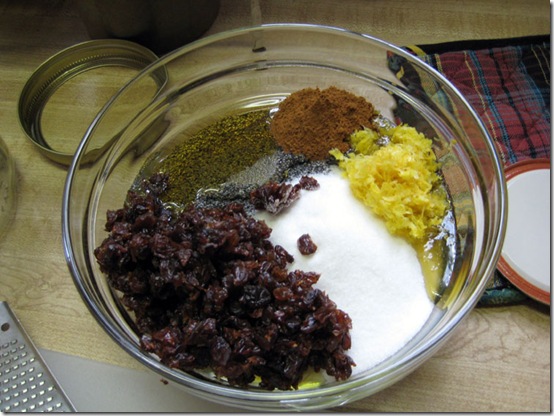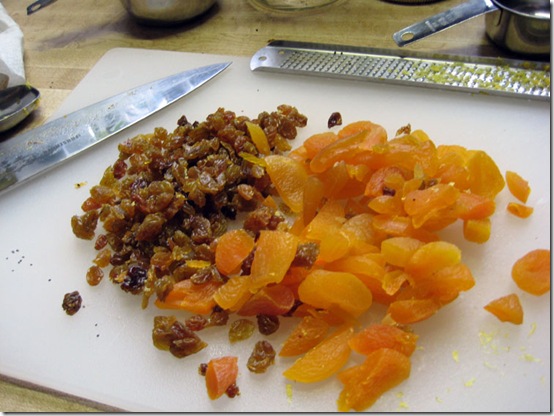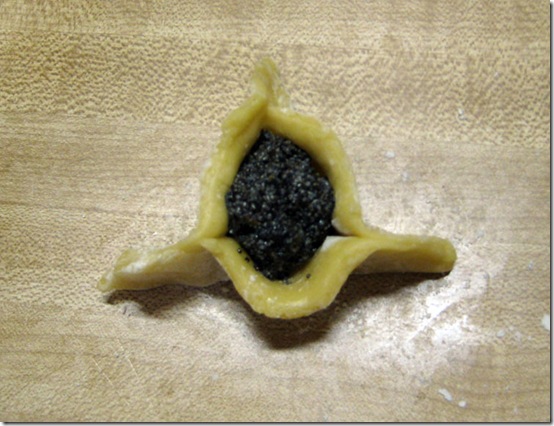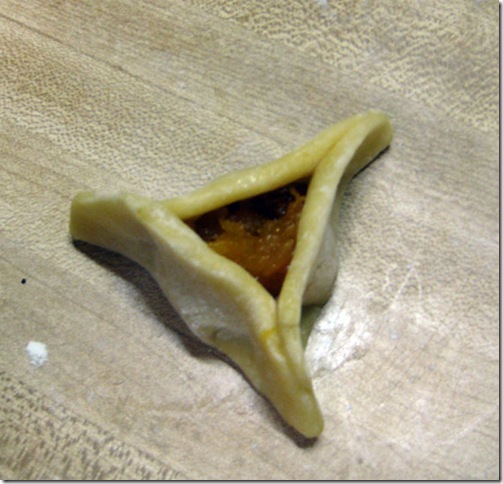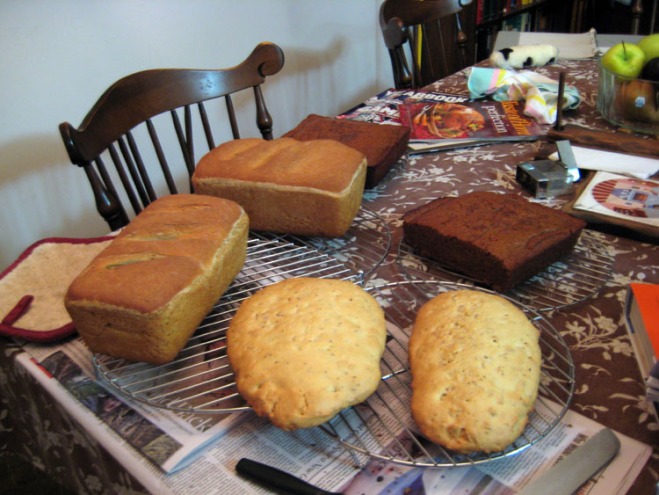
The first few years I made my own hamantaschen, I only made poppy (mun) and prune fillings because that’s what I had recipes for from Dad’s handwritten binder-of-goodness. And the reason Dad didn’t have any other fillings was because those were the only two acceptable ones, the traditional Ashkenazi fillings that our antecedents had made in Minsk. And since those were the only acceptable ones, that meant that all other varieties were verboten in the house when I was growing up. Sure, I’d seen raspberry and apricot in the bakeries; I’d even tried them a few times at other people’s Purim gatherings. But I’d never thought to make them myself.
(Okay, so there was the one year I had a jar of raspberry jam open in the fridge at Purim and I might have tried to make a few raspberry hamantaschen. But they might have bubbled over and this might have been before I was using silpat and parchment paper and it might have been a major effort to get baked-on, burned raspberry jam off of my old cookie sheets. And I might have vowed to never again try jam in hamantaschen. Ever.)
Over the years, I’ve gotten more comfortable with Dad’s mun and prune recipes and expanded on them, hopefully to the better. And, eventually, I did tiptoe up to and over the new frontier and decided to try apricot filling. I still haven’t tried raspberry again, though.

All of these benefit from being made at least a day in advance, so keep that in mind.
Orange-Prune filling
1 lb pitted prunes
1 juice orange, thinly sliced and seeds discarded
1 cup water
1/4 cup sugar
1 tsp lemon zest
1 tb vegetable or other neutral oil
juice from 1/2 lemon
1/8 tsp grated nutmeg
3/4 cup medium-chopped walnuts — small pieces, not dust.
Put the prunes, orange slices, water, sugar, and lemon zest in a medium saucepan. Bring the mix to a boil, then reduce to a simmer over very low heat, cover, and let it go for 45 minutes.
Remove the pan from the heat, uncover, and let it cool for 5-10 minutes, stirring gently once or twice. You should have a very soft compote, no matter how firm your prunes were to start.
Pick out the orange pieces, which at this point will just be very soft rind. If you’re not a huge fan of orange, you can discard them, but I pile most of them up on a cutting board, finely dice them, and then dump them back into the prune mixture.
Add the oil, lemon juice, and nutmeg to the pot.
Blend the prunes (and orange) until you get a thick, course paste. You want identifiable bits of prune. I’ve always been able to manage this with the firm application of a dinner fork (like I was beating eggs), but feel free to use a blender or food processor.
Stir in nuts.

This is not a juice orange, clearly. I couldn’t find one – I could find sweet lemons, prickly pears, and kumquats, but no juice oranges. So what did I use? A blood orange. Which wouldn’t have been my first choice of alternate, but navel oranges are even less optimal.
(Ironically, I got a juice orange in a mishloach manot on Purim, when it was too late to do any good.)
I added a dollop of orange juice concentrate – you can see it in the lower left corner – and so feel free to change up to 1/4 cup of the water with OJ. Don’t use more than that, at least not without reducing the sugar.
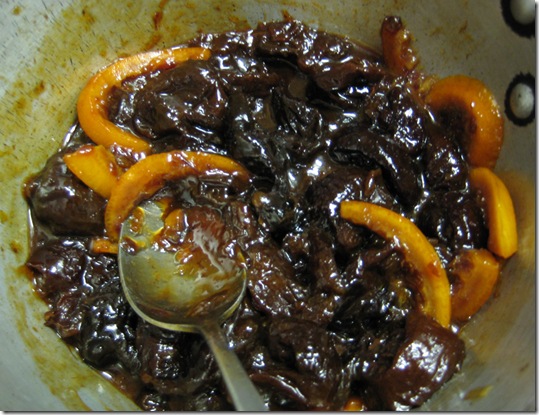
The ‘after’ picture. It’s easy to pick out the orange bits and even easier to mash this up without fouling an appliance.

Poppy filling (mun)
1.5 cups poppy seeds, ground
1/4 cup sugar
1/2 cup raisins, finely diced
1/4 cup honey
1 egg
1 tsp cinnamon
1 tb lemon zest
Throw everything into a bowl and stir.
I’ve been reading through Marcy Goldman’s excellent Treasury of Jewish Holiday Baking and in her Purim section, she is very firm on the necessity of grinding your poppy seeds. (Which I’d never done.) She is also equally insistent that you need special equipment for this task, that a regular coffee/spice grinder or blender won’t work, and has a Cook’s-like mini-essay on her attempts to find one. My own investigations were much briefer – I looked on Amazon – and, not liking what I saw, I decided to give it a try in my spice grinder.
I don’t know what kind of grinder Ms. Goldman was using, but where she ended up with high-velocity intact seeds, my little Krups was more than up to the task. (I also ground my own cinnamon for this, throwing a few bits of Vietnamese bark in there afterward.) I had to do it in shifts, but it worked just fine. And let me tell you, the difference it made in the final product was significant.
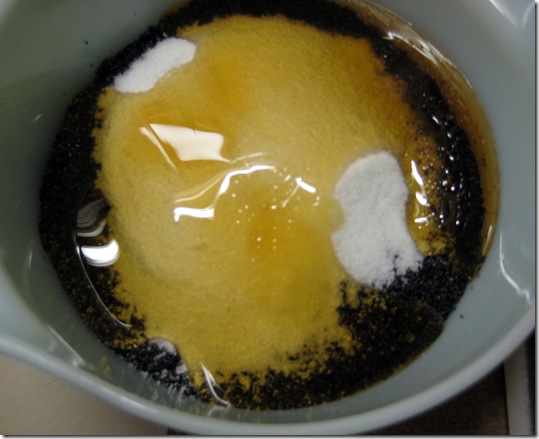
Before…
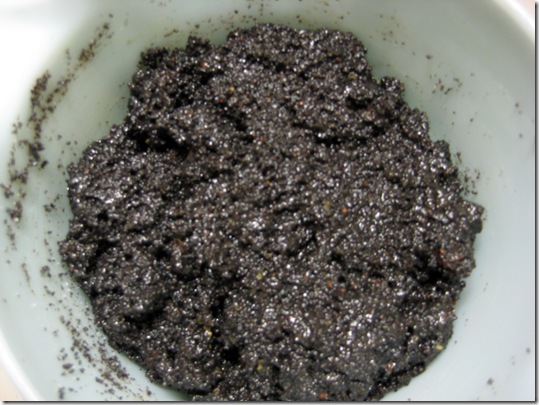
…and after.
Ginger-Apricot filling
3/4 cup water or orange juice
1/4 cup lemon juice
12 ounces dried apricots, chopped roughly
1/3 cup sugar
1/4 cup candied ginger, finely diced
1/4 cup golden raisins, diced
Combine all ingredients in a medium saucepan. Bring to a boil and then reduce to low heat and simmer, covered, for 10 minutes, stirring once or twice. Make sure you have enough liquid for the apricots and raisins to soften and begin to break down.
Let cool for five minutes.
Unlike the prune mixture, this won’t break down with just a fork, so you’re going to need an appliance. I recommend a food processor or an immersion blender. Or a regular blender, if that’s what you’ve got. The end result should be a course paste.

The original recipe doesn’t call for ginger, but I realized at the last minute that I didn’t have golden raisins and adding a cup of regular ones would make for some pretty odd-looking hamantaschen centers. So I upped the apricots, quartered the raisins, and threw in a handful of candied ginger cubes, which are possibly the single best reason Whole Foods should be allowed to exist.

I don’t have a food processor and, for whatever reason, totally forgot about the immersion blender, so I beat the apricots to death with the paddle attachment. It worked, but I wouldn’t recommend the process. The mixture was less jammy than… slick. I think you can tell from the picture. It tasted fine and it looked fine in the hamantaschen, but…
As can be seen in the top picture, I had leftovers. The prune and apricot fillings make great toast partners. The poppy seed mixture will go into a cake. All’s well that ends well.






